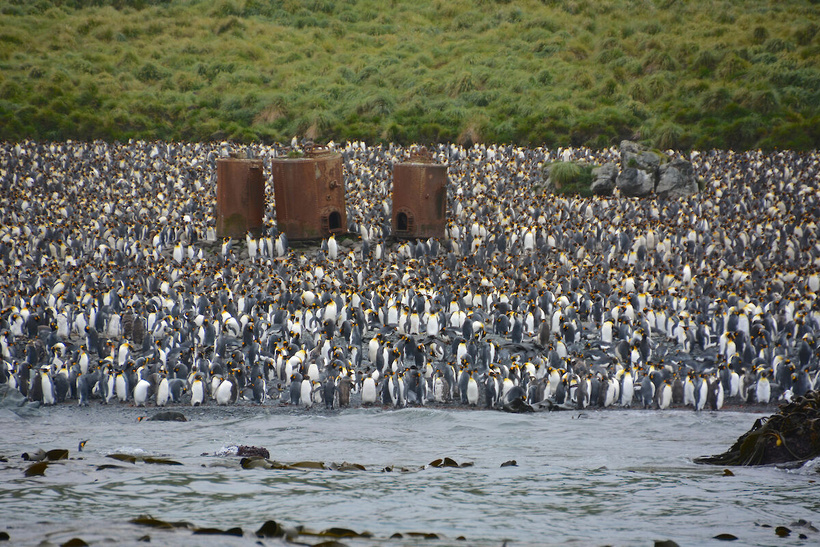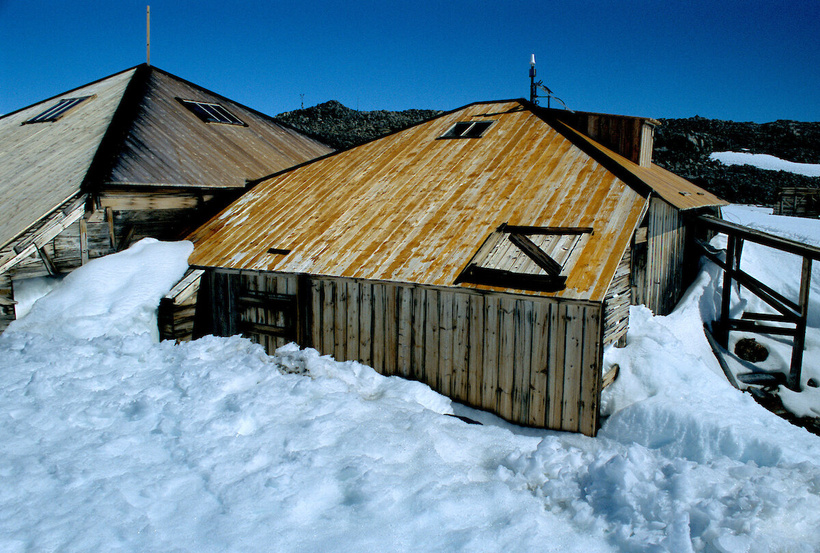The Australian Antarctic Division (AAD) conserves the cultural heritage of Antarctica. The efforts of the AAD is to understand the present through our past. They collect tangible, intangible and documentary heritage and host the Antarctic artefacts database.
Antarctica is to this day one of the most remote regions on earth. Since Captain Cook’s approach in 1722, human interest and appearance have grown in the area. Today, international scientific teams research the harshest conditions. The work done in this region encapsulates human curiosity and perseverance.

©King penguins colony of Lusitania Bay viewed from the water. The digester pressure cookers from the penguin oil industry stand on the beach. (Photo: Barend (Barry) Becker) Australian Antarctic Division
The Australian Antarctic Division has adopted a comprehensive heritage management strategy. Influenced by the policies of Australian heritage, the ADD implements a values-based approach. The identity heritage and take measures to protect and promote it based on these values:
- aesthetic appeal
- historic importance
- rarity
- provide an opportunity for research
- are particularly representative of a type
- are evidence of creative or technical achievement
- have associations with social groups or significant people
The identified cultural heritage assets include all types of heritage such as artefacts, places, traditions and events. The Antarctic artefacts database features the Antarctic Heritage Register with lists of movable heritage such as artefacts.
A stellar example of their work is the Mawson’s Huts management plan. The Australian Antarctic Expedition built Mawson’s Huts around 1911–14 who hold international significance. Conservation of heritage is an arduous task, magnified with the Antarctic conditions.

©Mawson’s main hut at Cape Denison, Commonwealth Bay (Photo: Peter McCabe) Australian Antarctic Division
The AAD and the Mawson’s Huts Foundation, founded in 1996 to preserve the Huts, developed a management plan for the site, in effect since 2013. The plan’s original conception was in 2007, enriched after a public review.
The plan lays out values and principles of the site that are homogenous to all actions. Moreover, within the document are comprehensive descriptions of the objectives, the site and values, conditions and management, promotion, tourism and implementation activities.
The document is a result of elaborate research at all levels of site management and is clear and thorough in its presentation. (You can find attached a pdf of the plan.)
Preserving Antarctica’s cultural heritage is a noble task for all humanity. As the expeditions there capture the human spirit uniquely. Furthermore, the efforts towards conservation are noteworthy examples of heritage management. (They are definitely in Local Approach’s benchmark list.)
Whether you are interested in learning more about human history in the Antarctic context or looking for examples of heritage management practice, be sure to check out AAD’s work.
I want to learn more:
Antarctica’s cultural heritage
Notable sites:

